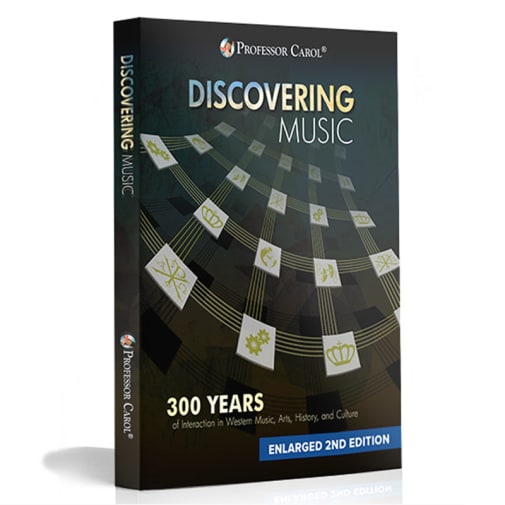This unique curriculum connects music with visual arts, political and economic history, and Western Culture from 1600 to 1914. Music was recognized in ancient times as one of the seven essential subjects comprising the Liberal Arts, and music has always been central to Classical Education. By connecting music history to political and cultural history, we make all of history more memorable and more interesting.
Discovering Music takes a comprehensive approach to history and the arts, linking literature, geography, social movements, science and technology, paintings, and architecture to form a more complete picture. By experiencing the arts of a particular time and place, students are better able to understand what happened – the social and political forces as well as the daily life of historical figures. History taught through the lens of the arts and music becomes more vivid and memorable. It's history you can hold in your ears.
In this new 2nd edition, the outline of 17 units covering the Common Practice Period from 1600 to 1914 has not changed a bit. Because the textbook was enlarged so much, they decided to extract the student material (exercises, viewing guides, projects), add and revise here and there, and give this material its own book. The new Student Workbook is spiral-bound, which should make it convenient to use. ~Amber

